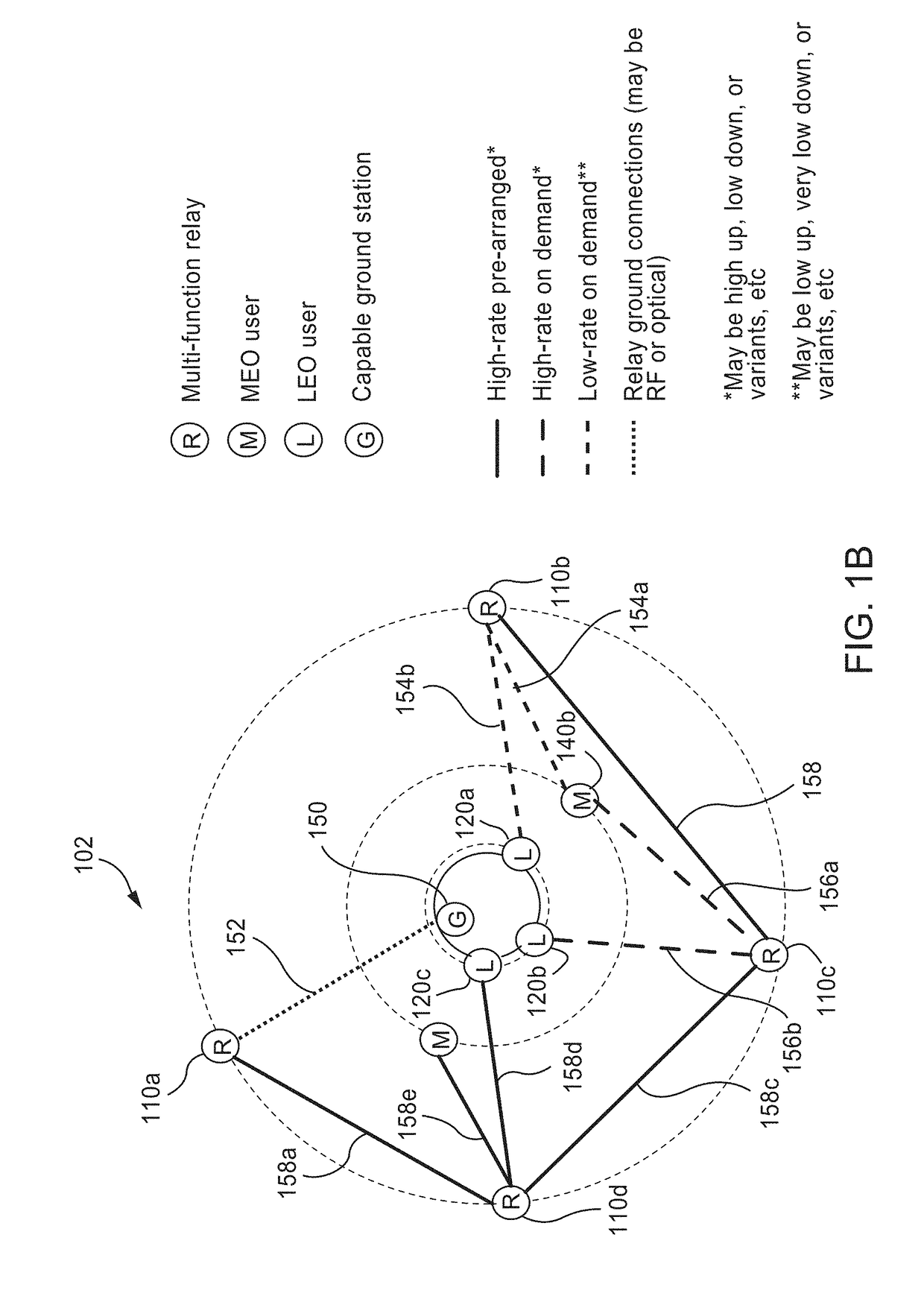Methods, systems, and apparatus for global multiple-access optical communications
a technology of optical communication and optical terminal, applied in multiplex communication, satellite communication transmission, instruments, etc., can solve the problems of inflexible utility, inability to support data rates that are high enough for modern users, and inability to support very high data rates. , to achieve the effect of high data rates, less flexibility, and high data rates
- Summary
- Abstract
- Description
- Claims
- Application Information
AI Technical Summary
Benefits of technology
Problems solved by technology
Method used
Image
Examples
Embodiment Construction
[0028]In the near future, NASA expects that there will be many dozens, or perhaps even hundreds to thousands, of new near-Earth spacecraft performing various missions, each of which will need a capable communication system. Some of these spacecraft may transmit data continuously at very high data rates, e.g., megabits to gigabits per second, if not higher. These spacecraft may relay data to each other and / or to terminals on Earth via an optical multiple access (OMA) system based on one or more multi-function relay satellites in high orbit, e.g., geostationary Earth orbit (GEO). This OMA system may provide on-demand data transmission on the order of today's Internet.
[0029]Here, a GEO- (or other high-orbit based-) terminal acts as a multiple access relay. Its receiver is a relatively fast-readout optical detector array, such as a focal plane array (FPA), that looks through a telescope at either the entire Earth, subregions of the Earth, or, possibly, the Earth plus spacecraft in low E...
PUM
 Login to View More
Login to View More Abstract
Description
Claims
Application Information
 Login to View More
Login to View More - R&D
- Intellectual Property
- Life Sciences
- Materials
- Tech Scout
- Unparalleled Data Quality
- Higher Quality Content
- 60% Fewer Hallucinations
Browse by: Latest US Patents, China's latest patents, Technical Efficacy Thesaurus, Application Domain, Technology Topic, Popular Technical Reports.
© 2025 PatSnap. All rights reserved.Legal|Privacy policy|Modern Slavery Act Transparency Statement|Sitemap|About US| Contact US: help@patsnap.com



